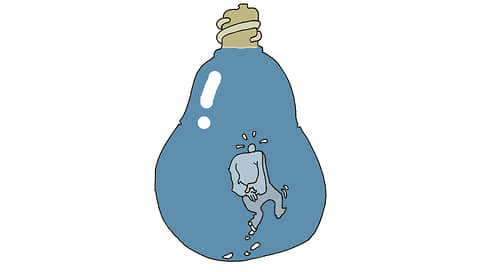The growth of electricity tariffs can slow down the development of data centers

In 2024, electricity prices for data processing centers (data centers) rose on average by 12% throughout the country, and in certain regions – by 25-30%. Because of this, the growth rate of the industry can decrease by 10–20% over three to five years. The government prepare a set of measures to stimulate the development of the industry, which include connecting to main power grids and additional benefits. However, market participants indicate another factor capable of restraining the development of the market: a deficiency of energy -canom in the Moscow region, where 76% of all data centers are located.
Over the past year, electricity prices for data processing centers have increased by an average of 12%in the country, follows from the data of the market, which Kommersant interviewed. Such an assessment is given by Valery Shorzhin, Deputy General Director of Vimpelcom and confirms the interlocutor in a large provider of the data center. Kommersant Megafon said that on average, in the second half of 2024, electricity prices consumed by centers rose by 13.4%. The company added that « in certain regions, tariffs increased by 25-30%. » Selectel said that in Moscow their electricity costs last year increased by 7.1%, and in St. Petersburg and the Leningrad region-an average of more than 9.5%.
Now amendments to the Law “On Communications” are being worked out, which will determine the data center as a construction of a connection, they told Kommersant in the apparatus of the profile deputy prime minister Dmitry Grigorenko.
“This will allow planning the construction of data centers near the mains of the unified national electric network in order to consume cheaper electricity,” they explain there. The difference in the tariffs for connecting to main networks and regional electric grid companies is depending on the region up to 50%, they say in the apparatus.
The mincifers clarify that the amendments to the second reading are “in a high degree of readiness”, and add that “the appropriateness of the introduction of additional regulation is considered, which is aimed at protecting investments in projects for the construction of the data centers”. The Ministry of Energy did not answer Kommersant.
Last year, the domestic market for the data center reached 156.5 billion rubles, increasing by 33.4%, wrote Tadviser. The growth in electricity tariffs can reduce the growth rate of the industry by 10–20% over three to five years, since the electricity is up to 40% of the operating costs of the centers, the Cloud X (IT company in the EN+structure) Denis Khlebodov explains. “Mostly such centers include data centers where large language models are trained,” he adds. The Megafon believes that the increase in electricity prices in the future can lead to the outflow of data from the data centers: « First of all, this applies to representatives of small and medium -sized businesses. » An increase in tariffs can not only limit their introduction, but also affect “on the dynamics of the economy as a whole,” says MTS Web Services.
Moreover, part of the cloud market players do not agree with such an assessment of influence.
“In recent years, electricity tariffs in Russia are growing by a moderate pace, while maintaining a significant impact on the business of cloud providers they will not have,” said Vladimir Dergachev, operating director of Selectel.
“At the moment, the impact specifically on the cloud business is not very high, but it is growing and in general comparable with the cost of equipment on the horizon of five to six years,” objects Valery Shorzhin. According to him, with the growth of the use of graphic accelerators for AI, companies in the market will need to optimize costs: “Therefore, we place data centers in locations with high -quality and optimal energy in the price so as not to shift the more expensive tariff for customers.”
The difference in the tariffs for connecting to the main and regional electric networks is 1 rubles. For 1 kW • h that can reduce the tariffs for the final racks by only 2–4%, explains Pavel Kulakov, CEO of Oxygen: “Now the more significant factors that affect the industry are a high level of the key rate, which does not allow attracting funds for the construction of new data centers, and problems with the receipt of the energy resources themselves, which can be expected for two to three years.”
Another factor that can limit the growth of the data center’s market is a shortage of electrical capacities in the Moscow region, which now concentrates 76% of all centers of the Russian Federation, says Mr. Khleborodov.
At the same time, the pace of introduction of generation in the region is significantly lagging behind the predicted growth of the needs of the data center, he adds: “Demand for electricity from the centers is growing by 30–40% per year, and the generation supply is 2–4%. By 2030, an electricity deficit can be from 8 to 13 GW. ”








